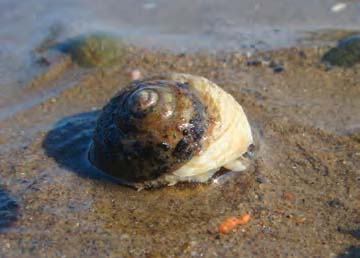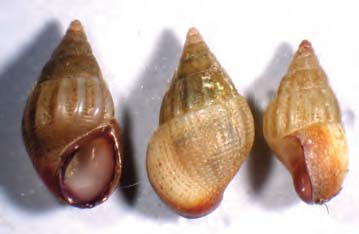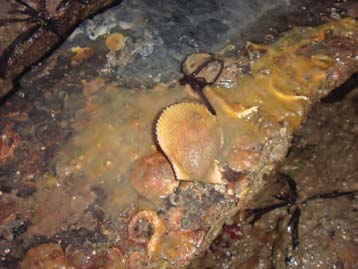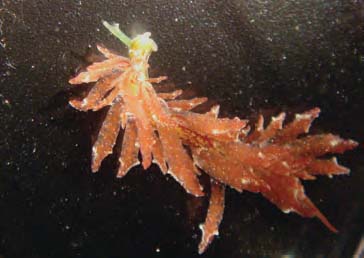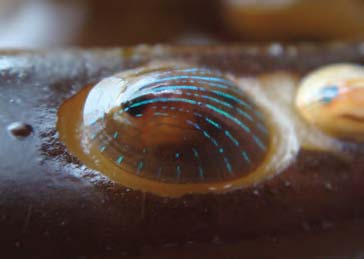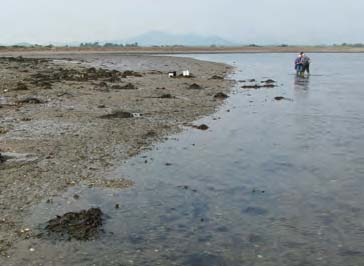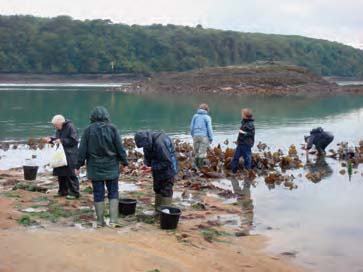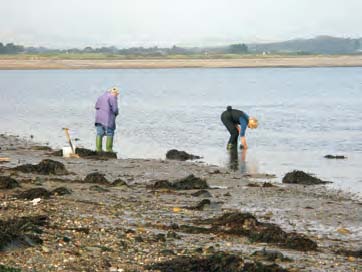|
The autumn field meeting to North Wales was an excellent one. We experienced much of what our climate can throw at us at this time of year; our first shore was worked on an overcast drizzly day, the final shore marked the beginning of an Indian summer!
As in 2006 Tom Clifton had prepared a varied marine programme with a range of shore types: an exposed northfacing narrow rocky shore and platform; a small complex of islets, gullies and narrows in the Menai Straits; a sheltered south-facing lagoon west of Pwllheli and a small west-facing bay, Porth Towyn with a reputation for species-rich shellsand. We worked one shore a day, the remainder of our time was spent working on our samples at Tom’s house. Having some sort of base that can improvise as a laboratory has become increasingly popular in recent years: the facilities to sort, clean and label material in addition to the opportunity to confer on identifications streamlines the time-consuming business of working through material and getting specimens correctly named. There are many steps from collection to curation and the more that can be done during the meeting the better and it ensures that species lists can be drawn up promptly and efficiently. A juvenile Trivia was found on the first day. The immature shells are translucent and glossy, lacking sculpture and not recognisable as Trivia when first encountered. We also found Hermaea bifida on red weeds in the Menai Strait, a tiny red nudibranch whose presence on a site can be smelt before it is found! We also saw Chlamys varia in a habitat in which it can often be found; under a boulder in the kelp zone/rapids between two islets. Odostomia and Brachystomia species turned up in weed samples and these will be useful material for the forthcoming Pyramidellid Workshop at Cardiff.
We had good lists from all our sites but the lagoon at Traeth Crugan yielded some superb finds. The sandy bay is wide and backed by dunes. The lagoon sits within a string of banks and reefs which form an arc offshore with an outlet where there is a deep channel. On an extremely low spring tide the banks can be accessed from the shore at their western end by crossing over a stable shell/gravel pavement. On this occasion one of the party managed it in chest waders. Such weeds as are present are mixed algal species, including various reds, and are attached to pebbles and small cobbles. There were many dead bivalve shells and occasional living individuals on the seabed and the calm day afforded good visibility in the shallows. It is evident that the lagoon has a very diverse bivalve fauna. All the party were able to find Tapes aureus which was abundant, Gastrana fragilis which was common, and sieving in the sands yielded juveniles of several of the resident bivalves. Parvicardium exiguum was found living amongst the gravels. Samples of the weeds were taken for washing, sieving and sorting. They were astonishing in yielding Rissoa lilacina in abundance with considerably fewer Rissoa parva, R. interrupta and R. sarsi var. albella and, apart from a juvenile Raphitoma purpurea, not a lot else. Many of the microspecies normally associated with weeds were absent (at least in my samples). We had an exciting moment when I thought we had found Circulus striatus alive but it turned out to be a juvenile Gibbula. I have lost count of the number of times I have been sent, for confirmation, juvenile shells of Gibbula umbilicalis which have been mistaken for Circulus. Interesting sites and exciting finds are the hallmarks of a good field meeting, and another important component was the planning that Tom had carried out to ensure that participants would have plenty to be excited about!
(The montage of images which accompanies this article has been compiled using photos contributed by Ron Boyce and Peter Topley; thanks to both.) |
Figure 1: Gibbula magus: living individuals were seen relatively frequently at LWM, Traeth Crugan. (Peter Topley)
Figure 2: Rissoa violacea was abundant in the weeds from the lagoon at Traeth Crugan. (Peter Topley)
Figure 3: Chlamys varia, with a thin coating of sponge surrounded by bryozoan-encrusted saddle oysters and other colonial organisms. (Peter Topley)
Figure 4: Hermaea bifida: a sacoglossan opisthobranch which is usually found on red algae, notably Griffithsia spp. and owing to its strong ‘catty’ smell is often smelt before it is found. (Topley)
Figure 5: Helcion pellucidum: the animals colonise kelp stipes and eat out a shallow ‘crater’ in which they nestle. (Peter Topley)
Figure 6: Working the lagoon shallows at Traeth Crugan. Note the abundance of bivalve shells (Ron Boyce)
Figure 7: Collecting samples from pockets of shellsand at Porth Towyn (Ron Boyce)
Figure 8: Working the kelp zone and trowelling in the gravels for bivalves at LWM in the Menai Straits. (Peter Topley)
Figure 9: Searching for Tapes aureus and Gastrana fragilis in the lagoon shallows at Traeth Crugan (Ron Boyce) |
Field meeting - North Wales September 2008
Issue
18
Page
19

